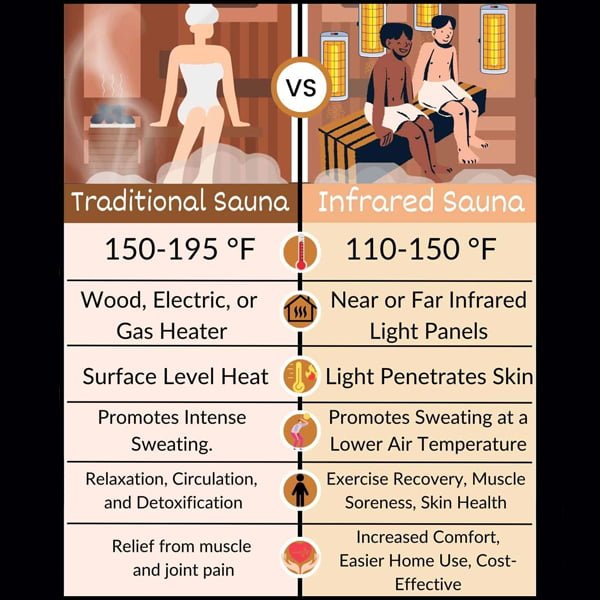Finding the sweet spot for your sauna time can turn a simple daily routine into a powerful boost for your health and wellness. While saunas are a fantastic way to relax and rejuvenate, knowing how long to stay inside can optimize the benefits and enhance your overall wellness experience.
In this blog, we delve into what research says about the ideal duration for sauna sessions to help you maximize the health benefits without overdoing it.

Understanding Sauna Benefits
Before we explore the optimal timing, it’s important to understand why saunas are more than just a place to sweat.
The Health and Wellness Advantages of Regular Sauna Use
- Cardiovascular Health: Regular sauna use has been linked to lowered blood pressure and improved heart function.
- Stress Relief: The heat from the sauna helps relax muscles and relieve tension, contributing to decreased stress levels.
- Detoxification: Sweating in a sauna helps flush toxins from the body, supporting a natural detoxification process.
What Research Says About Sauna Duration
Recent studies provide insights into how long you should stay in a sauna to reap the maximum health benefits.
Optimal Sauna Duration
- General Recommendation: Most studies suggest that the optimal duration for a sauna session is between 15 to 20 minutes.
- Adjustments for Health Conditions: Individuals with cardiovascular issues or other health concerns should consult with a doctor and may need to adjust the duration accordingly.
Frequency Matters
- Regular Use: For the best health outcomes, engaging in sauna sessions 2 to 3 times per week.
- Advanced Practices: Some Finnish studies indicate benefits from daily sessions, but these should be built up to gradually.
How to Time Your Sauna Sessions for Maximum Benefit
Knowing how to schedule your sauna use can enhance its effectiveness. Here’s how to plan your sessions:
Starting Slow
- Initial Sessions: Begin with shorter durations of about 10 minutes as you acclimate to the heat.
- Gradual Increase: Slowly increase the time spent in the sauna as your body adjusts to ensure comfort and safety.
Listening to Your Body
- Monitoring Response: Pay attention to how your body feels during and after sessions. If you feel dizzy or uncomfortable, it’s time to step out.
- Hydration: Always ensure you are well-hydrated before entering a sauna. Dehydration can lead to adverse effects.
Guide to safe sauna use for beginners.
Incorporating Sauna Sessions into Your Wellness Routine
Integrating sauna use into your health and wellness routine should be done thoughtfully to ensure it complements other health practices.
Pairing with Other Activities
- Post-Exercise: Using a sauna after workouts can help with muscle relaxation and reducing inflammation.
- Relaxation Time: Plan sauna sessions during times of the day when you can relax afterward, enhancing the stress-relieving benefits.
Advanced Techniques
- Loyly (Sauna Steam): Adding steam by sprinkling water on hot stones can intensify the session, allowing shorter durations to be effective.
- Cool Down: Always allow time for a gradual cool-down after exiting the sauna to stabilize your body temperature.
How to combine sauna sessions with your fitness regime.
Health & Wellness Conclusion
Sauna sessions can significantly enhance your health and wellness if timed correctly. By following researched guidelines and listening to your body, you can enjoy the myriad benefits saunas offer safely and effectively. Remember, the key to reaping the most benefits from your sauna sessions lies in the art of timing.
Whether you are a seasoned sauna enthusiast or a beginner looking to integrate this practice into your wellness routine, understanding and respecting the recommended durations and frequencies can lead to a healthier, more balanced lifestyle.

Read more about the latest research on sauna health benefits.
This blog aims not only to inform about the effective duration of sauna sessions but also to integrate this practice into a comprehensive health and wellness routine, ensuring readers can safely enjoy and benefit from regular sauna use.
 Barrel Saunas
Barrel Saunas

